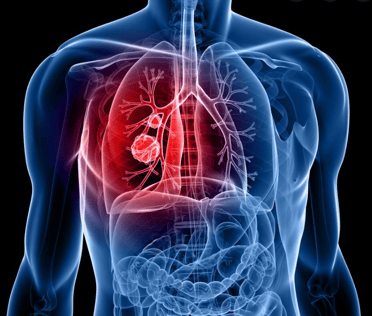 November is lung cancer awareness month. Lung cancer is the most common cause of cancer death in the United States and worldwide. This article focuses on which risk factors for lung cancer you can change and cannot change.
November is lung cancer awareness month. Lung cancer is the most common cause of cancer death in the United States and worldwide. This article focuses on which risk factors for lung cancer you can change and cannot change.
A risk factor is anything that increases a person’s chance of getting a disease such as cancer. Different cancers have different risk factors. Some risk factors, like smoking, can be changed. Others, like a person’s age or family history, can’t be changed.
But having a risk factor, or even several, does not mean that you will get the disease. And some people who get the disease may have few or no known risk factors.
Several risk factors can make you more likely to develop lung cancer. These factors are related to the risk of lung cancer in general. It’s possible that some of these might not apply to small cell lung cancer (SCLC).
Risk Factors You Can Change
Tobacco smoke
Smoking is by far the leading risk factor for lung cancer. About 80% of lung cancer deaths are thought to result from smoking and this number is probably even higher for small cell lung cancer (SCLC). It’s very rare for someone who has never smoked to have SCLC.
The risk of lung cancer for people who smoke is many times higher than for people who don't smoke. The longer you smoke and the more packs a day you smoke, the greater your risk.
Cigar smoking and pipe smoking are almost as likely to cause lung cancer as cigarette smoking. Smoking low-tar or “light” cigarettes increases lung cancer risk as much as regular cigarettes. Smoking menthol cigarettes might increase the risk even more since the menthol may allow people to inhale more deeply.
Secondhand smoke
If you don’t smoke, breathing in the smoke of others can increase your risk of developing lung cancer. Secondhand smoke is thought to cause more than 7,000 deaths from lung cancer each year.
Exposure to radon
Radon is a naturally occurring radioactive gas that results from the breakdown of uranium in soil and rocks. You can’t see, taste, or smell it. According to the US Environmental Protection Agency, radon is the second leading cause of lung cancer in this country, and is the leading cause among people who don't smoke.
Outdoors, there is so little radon that it is not likely to be dangerous. But indoors, radon can be more concentrated. Breathing it in exposes your lungs to small amounts of radiation. This may increase a person’s risk of lung cancer.
Exposure to asbestos
People who work with asbestos are several times more likely to die of lung cancer. Lung cancer risk is much greater in workers exposed to asbestos who also smoke. It’s not clear how much low-level or short-term exposure to asbestos might raise lung cancer risk.
People exposed to large amounts of asbestos also have a greater risk of developing mesothelioma, a type of cancer that starts in the lining surrounding the lungs.
In recent years, government regulations have greatly reduced the use of asbestos in commercial and industrial products. It’s still present in many homes and other older buildings, but it’s not usually considered harmful as long as it’s not released into the air by deterioration, demolition, or renovation.
Taking certain dietary supplements
Studies looking at the possible role of vitamin supplements in reducing lung cancer risk have had disappointing results. In fact, 2 large studies found that people who smoked who took beta carotene supplements actually had an increased risk of lung cancer. The results of these studies suggest that people who smoke should avoid taking beta carotene supplements.
Arsenic in drinking water
Studies of people in parts of Southeast Asia and South America with high levels of arsenic in their drinking water have found a higher risk of lung cancer. In most of these studies, the levels of arsenic in the water were many times higher than those typically seen in the United States, even areas where arsenic levels are above normal. For most Americans who are on public water systems, drinking water is not a major source of arsenic.
Risk Factors You Cannot Change
Previous radiation therapy to the lungs
People who have had radiation therapy to the chest for other cancers are at higher risk for lung cancer, particularly if they smoke. Examples include people who have been treated for Hodgkin disease or women who get chest radiation after a mastectomy for breast cancer. Women who have radiation therapy to the breast after a lumpectomy do not appear to have a higher than expected risk of lung cancer.
Air pollution
In cities, air pollution (especially near heavily trafficked roads) appears to raise the risk of lung cancer slightly. This risk is far less than the risk caused by smoking, but some researchers estimate that worldwide about 5% of all deaths from lung cancer may be due to outdoor air pollution.
Personal or family history of lung cancer
If you have had lung cancer, you have a higher risk of developing another lung cancer.
Brothers, sisters, and children of people who have had lung cancer may have a slightly higher risk of lung cancer themselves, especially if the relative was diagnosed at a younger age. It’s not clear how much of this risk might be due to shared genes among family members and how much might be from shared household exposures (such as tobacco smoke or radon).

